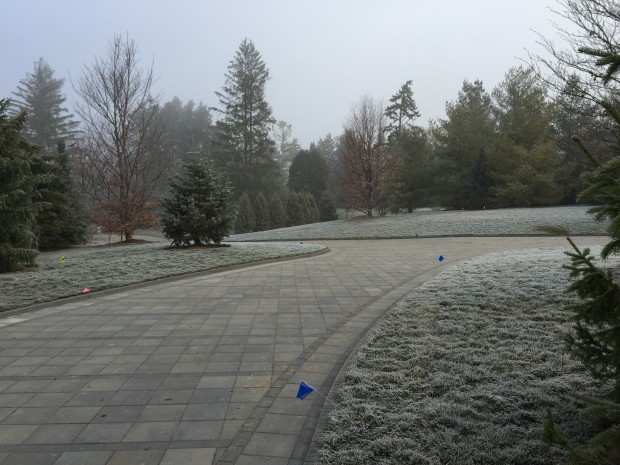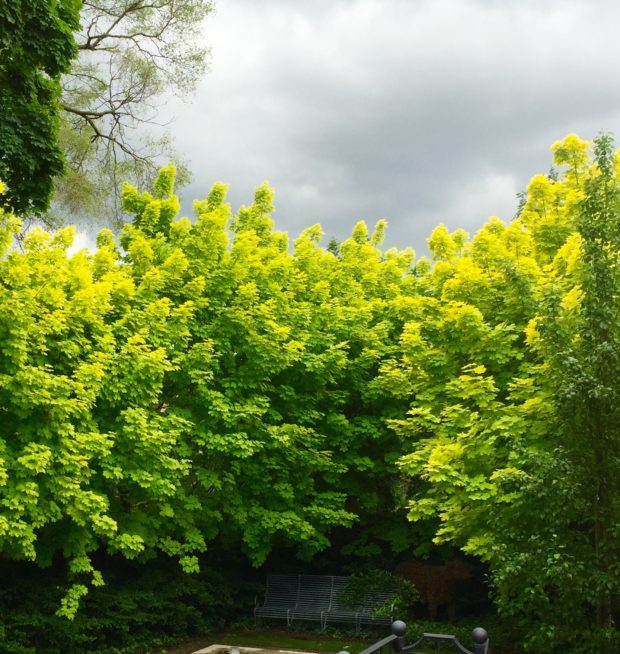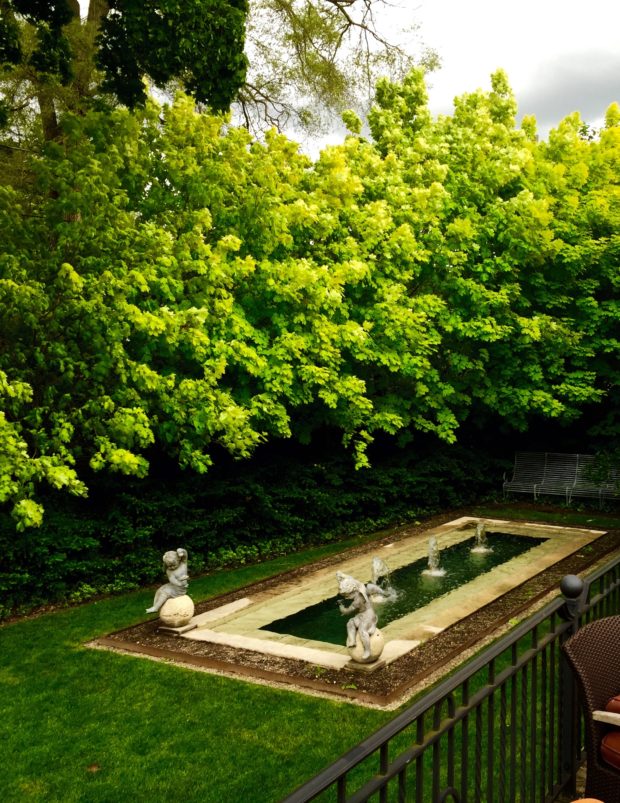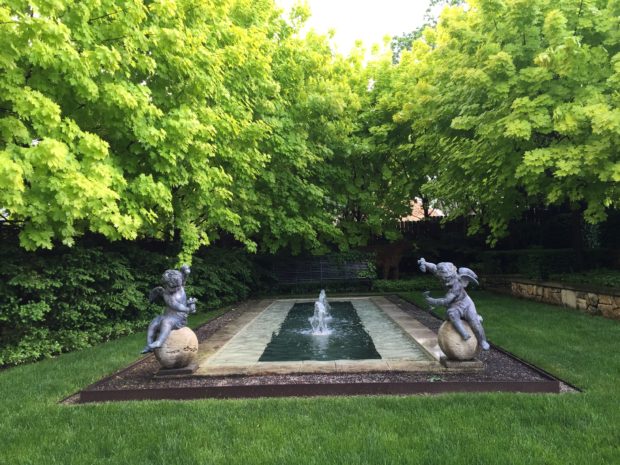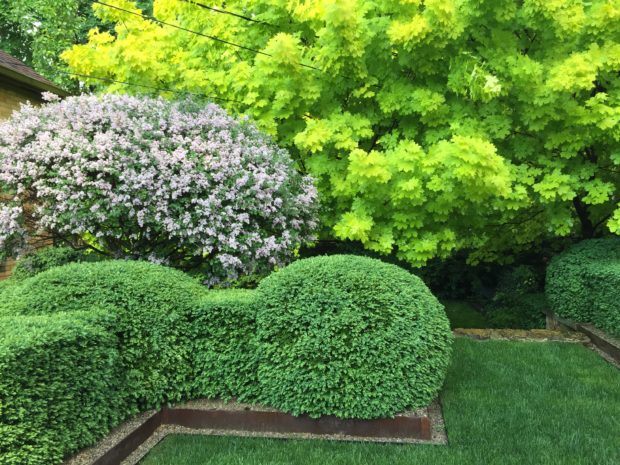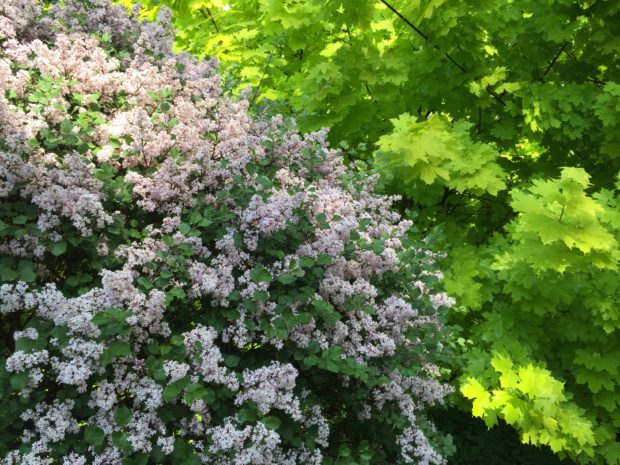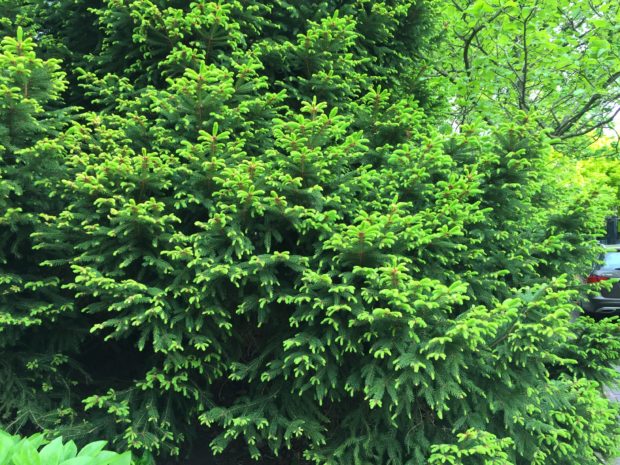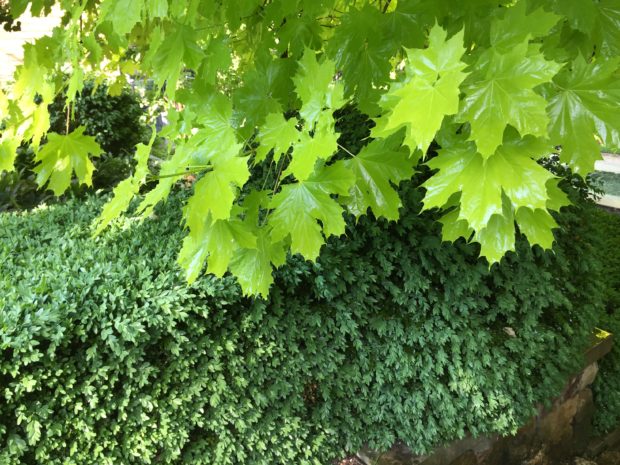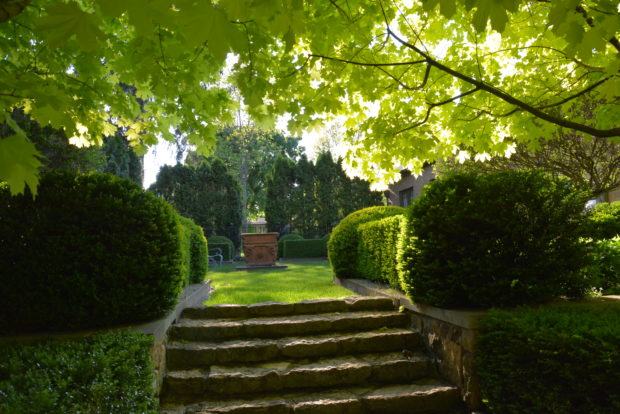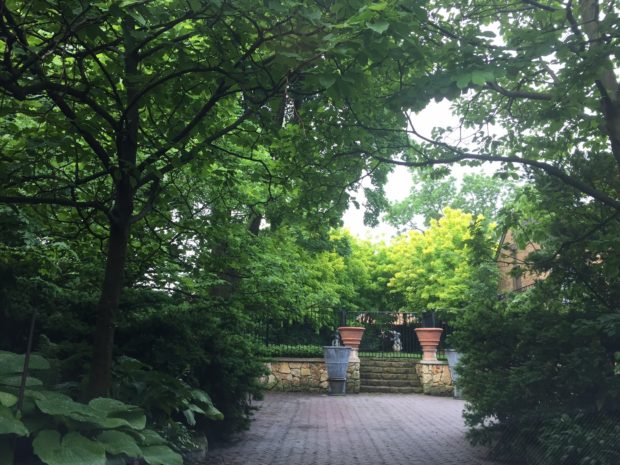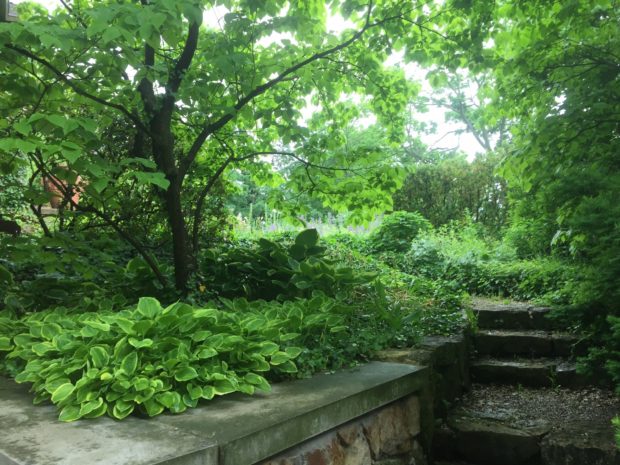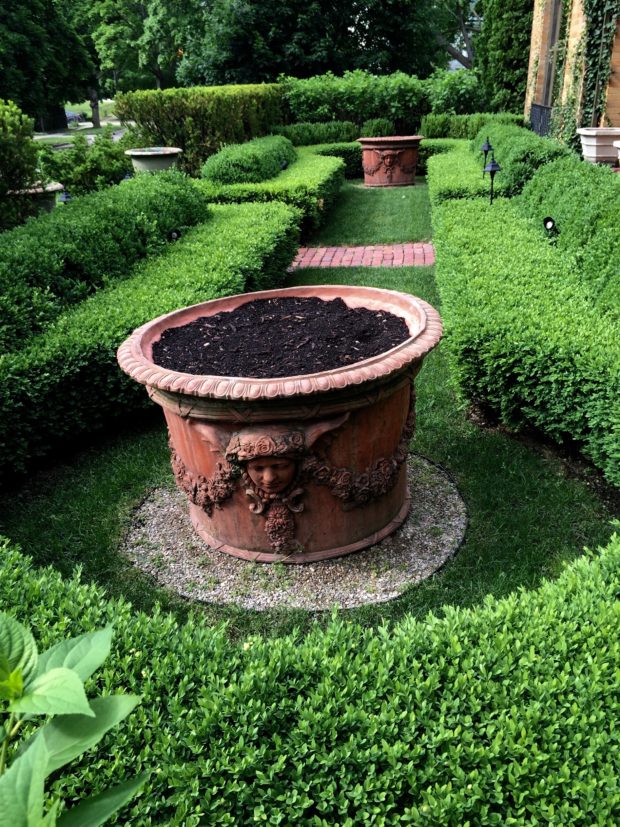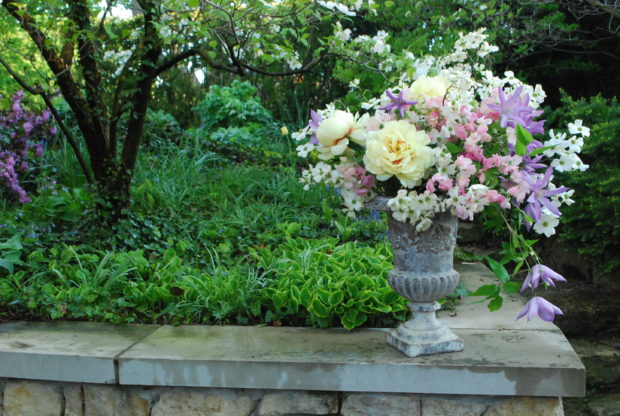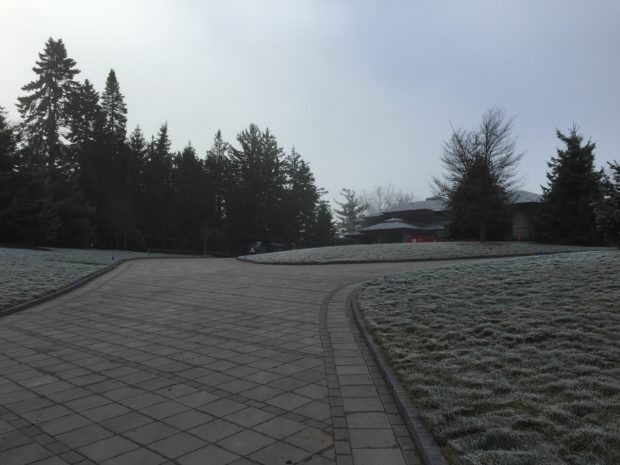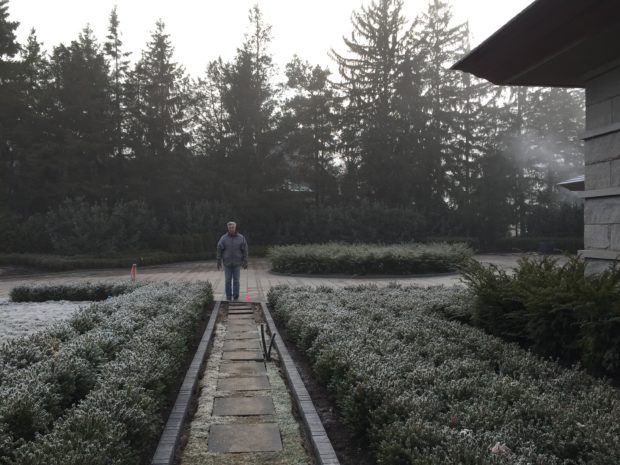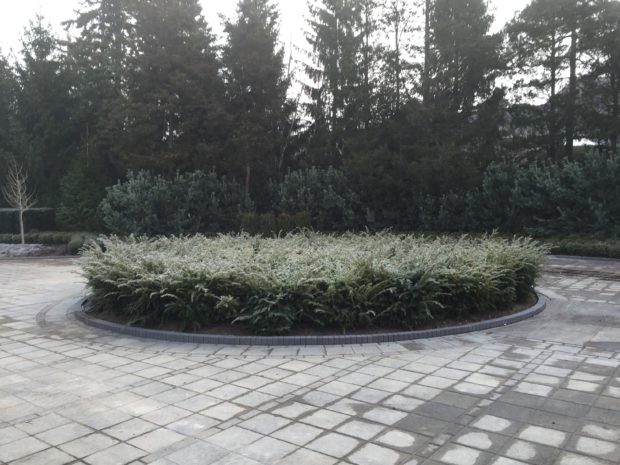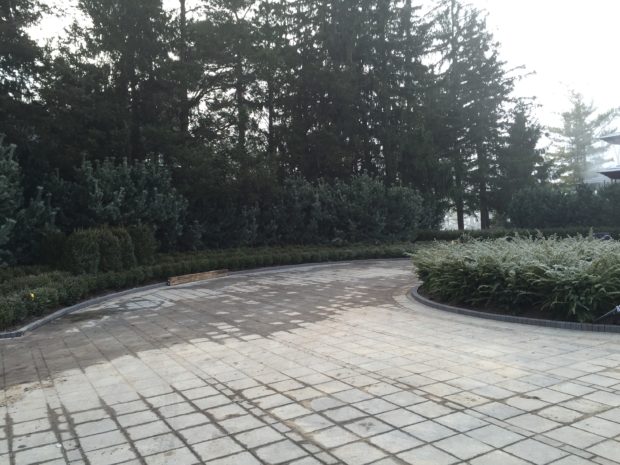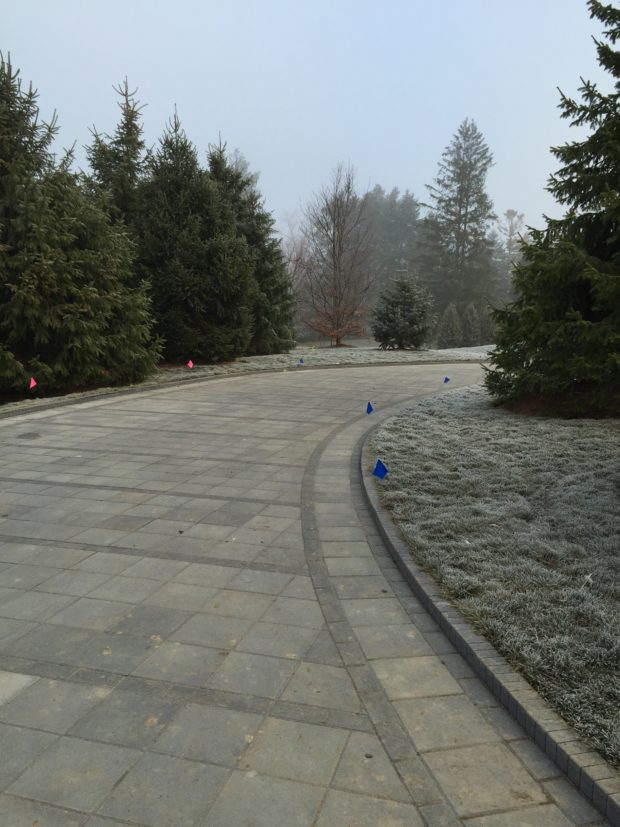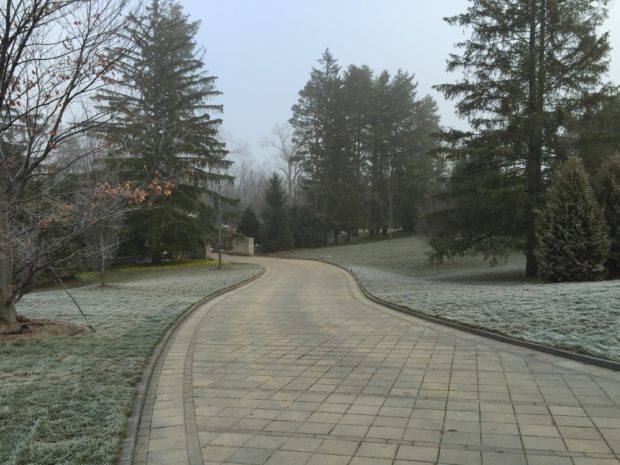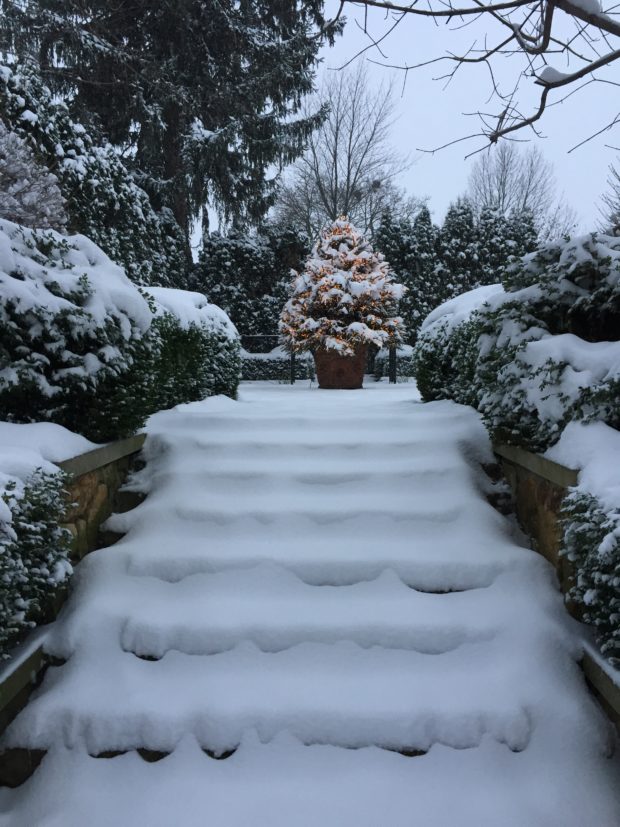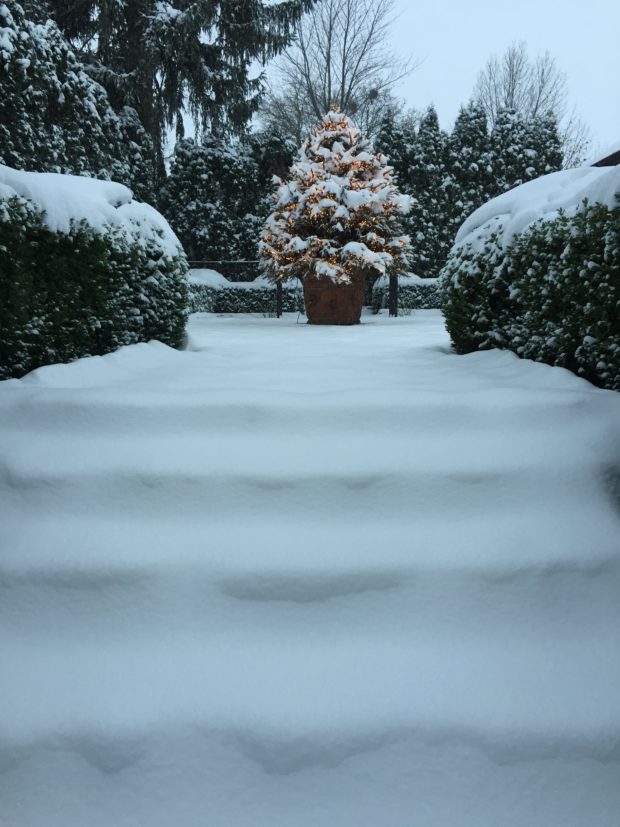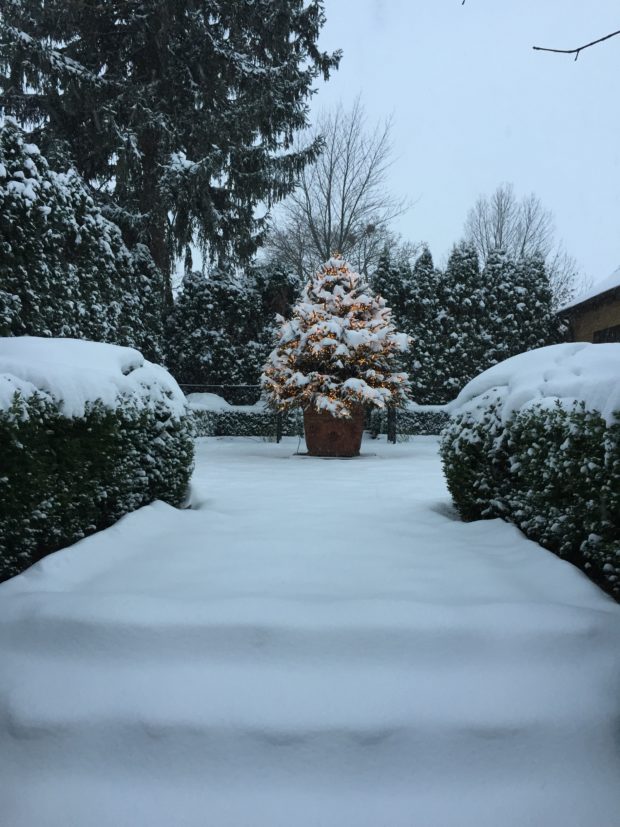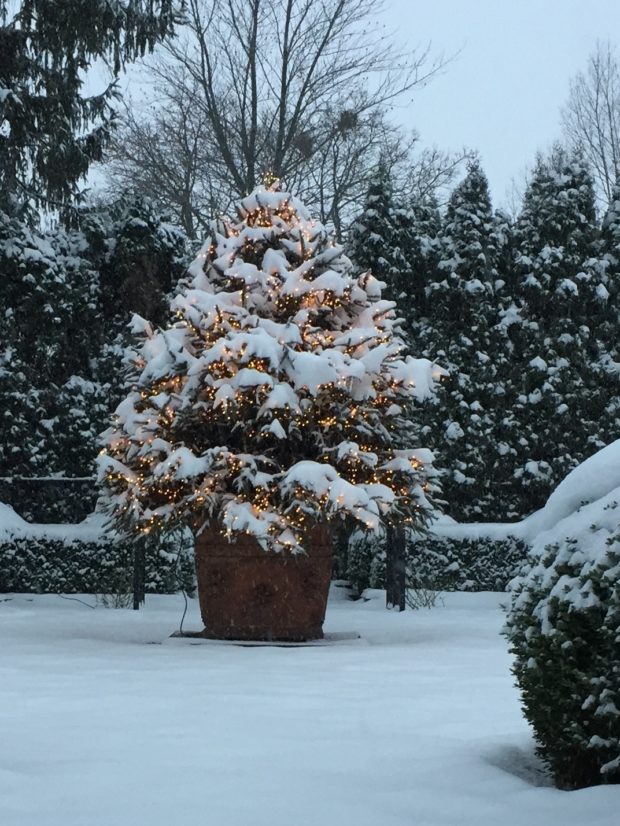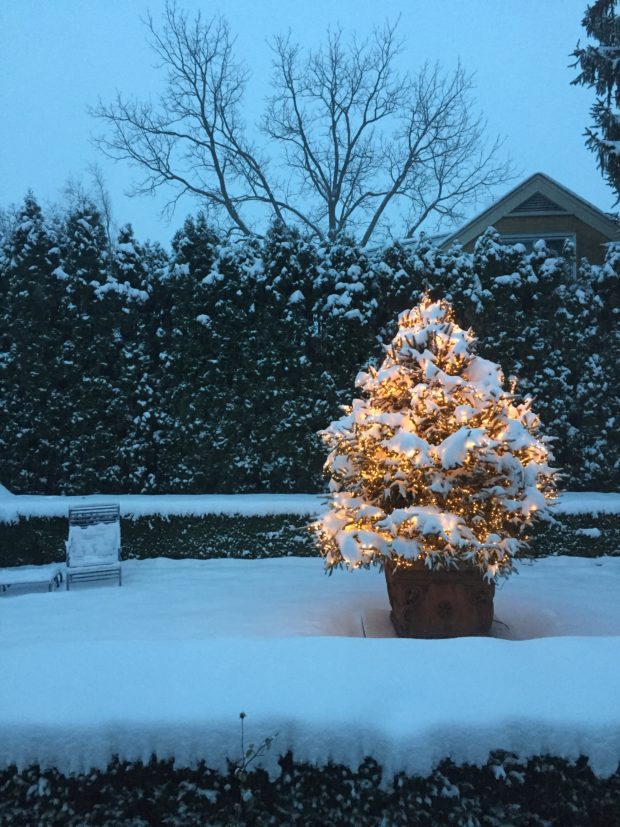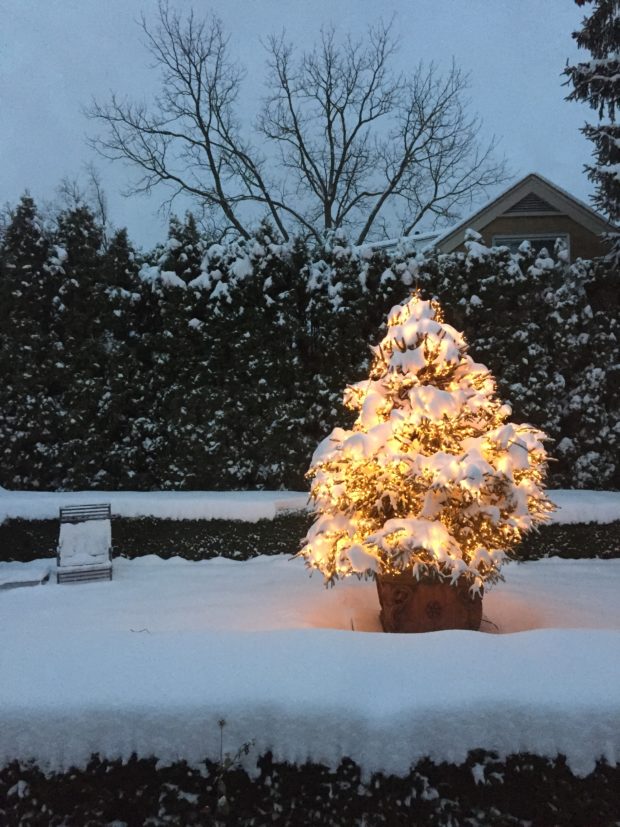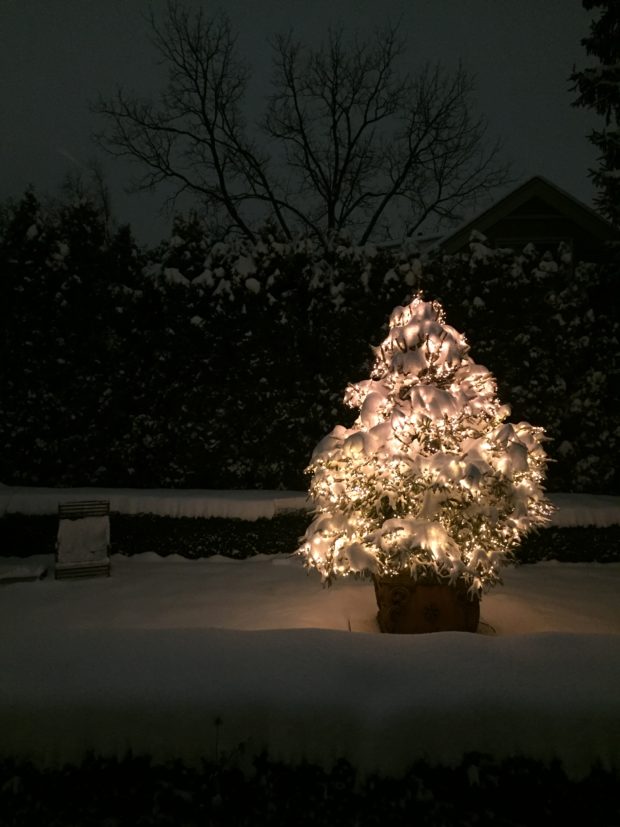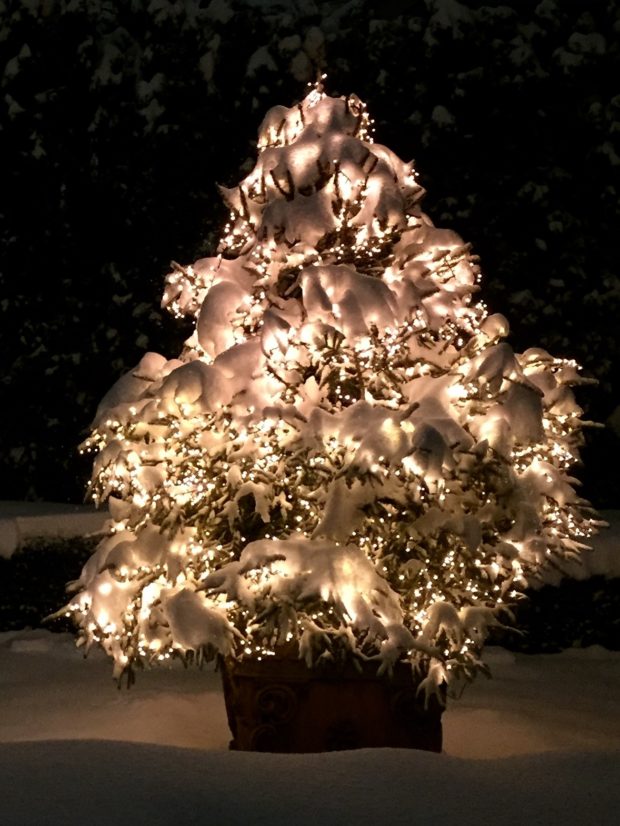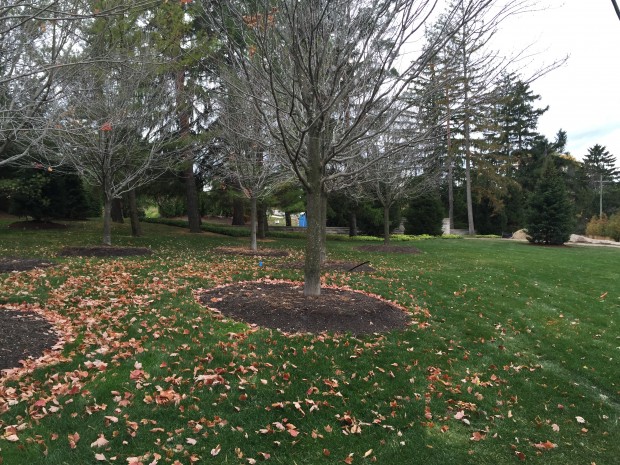 The previous owners of this property had done some work on the landscape. Notable were the evergreens planted one after another, in zig zag rows, on the long sides of the lot. I understand the need to create privacy, but that can be accomplished in a number of ways, not all of which involve a wall. The problem with rows of screening trees on a narrow lot is that they can make the property feel boxed in. There is no opportunity to borrow beautiful views from the landscapes beyond that evergreen wall. This landscape would have to generate a sense of depth from these arbitrary edges in. A design beginning with the perimeter trees that would move in varying degrees towards the center of the property seemed appropriate. That center was the driveway, which curves multiple times before it reaches the house. The distance from the road to the house was considerable. I wanted to offer any guest a chance to slow down and enjoy the view. My client was interested in a park like landscape that would feature a group of unusual or specimen trees. We were in agreement about a landscape concept. We began by transplanting a group of maples that had been dotted along the drive to the street side of the property.
The previous owners of this property had done some work on the landscape. Notable were the evergreens planted one after another, in zig zag rows, on the long sides of the lot. I understand the need to create privacy, but that can be accomplished in a number of ways, not all of which involve a wall. The problem with rows of screening trees on a narrow lot is that they can make the property feel boxed in. There is no opportunity to borrow beautiful views from the landscapes beyond that evergreen wall. This landscape would have to generate a sense of depth from these arbitrary edges in. A design beginning with the perimeter trees that would move in varying degrees towards the center of the property seemed appropriate. That center was the driveway, which curves multiple times before it reaches the house. The distance from the road to the house was considerable. I wanted to offer any guest a chance to slow down and enjoy the view. My client was interested in a park like landscape that would feature a group of unusual or specimen trees. We were in agreement about a landscape concept. We began by transplanting a group of maples that had been dotted along the drive to the street side of the property.
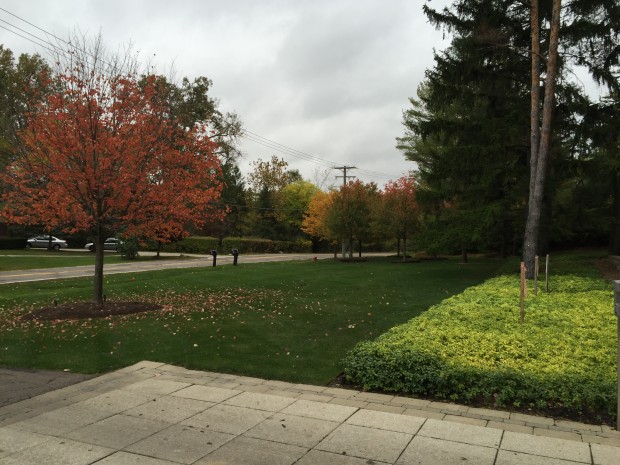 From the driveway, this massed group of red maples will define the eastern front edge of the property in a non linear way. The maple in the left foreground of this picture was eventually moved into that grouping. It will be replaced by one of a pair of large caliper London Plane trees to be planted this spring that will flank the driveway. The stakes in the pachysandra indicate homes for three new Norway spruce.
From the driveway, this massed group of red maples will define the eastern front edge of the property in a non linear way. The maple in the left foreground of this picture was eventually moved into that grouping. It will be replaced by one of a pair of large caliper London Plane trees to be planted this spring that will flank the driveway. The stakes in the pachysandra indicate homes for three new Norway spruce.
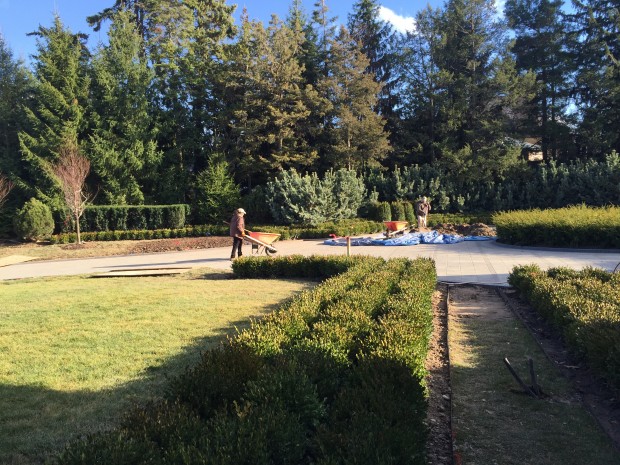 The long driveway culminates in a drive court immediately adjacent to the house. I did opt for a more formal and contemporary landscape here. This is a very contemporary house that I felt would benefit from masses and architectural shapes created by just a few species of plants. I did detail in a post last fall the planting of 15 pinus flexilis “Vanderwolf’s” and 18 pinus flexilis “Joe Burke”. The flexible pines we planted to screen a large generator, and provide screening to a lot line that came within 6′ of the drive court. All of the large evergreens in this picture are on a neighboring property. Our plantings are all under 12 feet tall. Generous numbers of boxwood “Green Gem, the columnar taxus “Nova”, and taxus cuspidata spreaders would fill out the landscape.
The long driveway culminates in a drive court immediately adjacent to the house. I did opt for a more formal and contemporary landscape here. This is a very contemporary house that I felt would benefit from masses and architectural shapes created by just a few species of plants. I did detail in a post last fall the planting of 15 pinus flexilis “Vanderwolf’s” and 18 pinus flexilis “Joe Burke”. The flexible pines we planted to screen a large generator, and provide screening to a lot line that came within 6′ of the drive court. All of the large evergreens in this picture are on a neighboring property. Our plantings are all under 12 feet tall. Generous numbers of boxwood “Green Gem, the columnar taxus “Nova”, and taxus cuspidata spreaders would fill out the landscape.
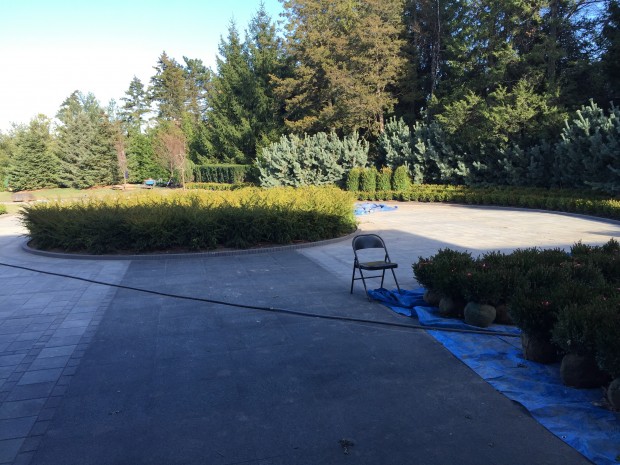 The round center island was planted in spreading taxus capitata, 24″, 30″ and 36″ tall. The tall yews were planted on the perimeter, and the shortest group in the center. The whirling rhythm of all of those descending taxus branches was all about sculpture. Standing on the porch, there is a view to the distant landscape.
The round center island was planted in spreading taxus capitata, 24″, 30″ and 36″ tall. The tall yews were planted on the perimeter, and the shortest group in the center. The whirling rhythm of all of those descending taxus branches was all about sculpture. Standing on the porch, there is a view to the distant landscape.
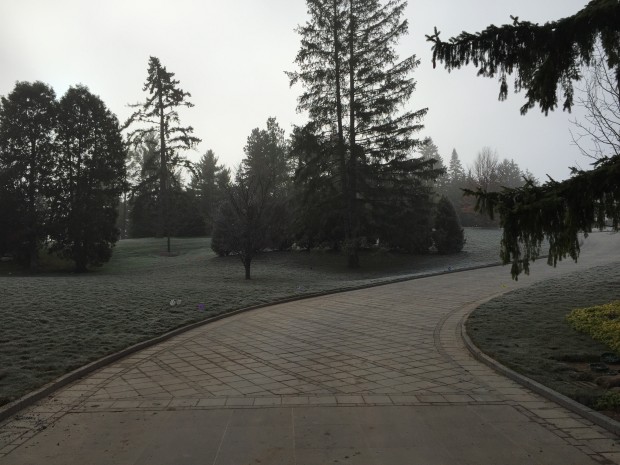 Very late this past December, I drove over to take a look. Standing at the gate, a sizable tricolor beech is central to the view. The old and thinning Norway spruce to the right-I could not bring myself to take this old tree down. Big and old, and of considerable scale is beautiful. Plants with age so greatly endow any landscape. A landscape with old trees is weighted, and can anchor new plantings. I planted a row of tall and massive American arborvitae in a large curve behind that old spruce. This adds a lot of green weight to the old spruce at the ground level. While the driveway angles sharply to the right, this simple collection of plants holds the eye. The leading edge of another old Norway spruce in the right foreground of this picture directs the eye into the composition.
Very late this past December, I drove over to take a look. Standing at the gate, a sizable tricolor beech is central to the view. The old and thinning Norway spruce to the right-I could not bring myself to take this old tree down. Big and old, and of considerable scale is beautiful. Plants with age so greatly endow any landscape. A landscape with old trees is weighted, and can anchor new plantings. I planted a row of tall and massive American arborvitae in a large curve behind that old spruce. This adds a lot of green weight to the old spruce at the ground level. While the driveway angles sharply to the right, this simple collection of plants holds the eye. The leading edge of another old Norway spruce in the right foreground of this picture directs the eye into the composition.
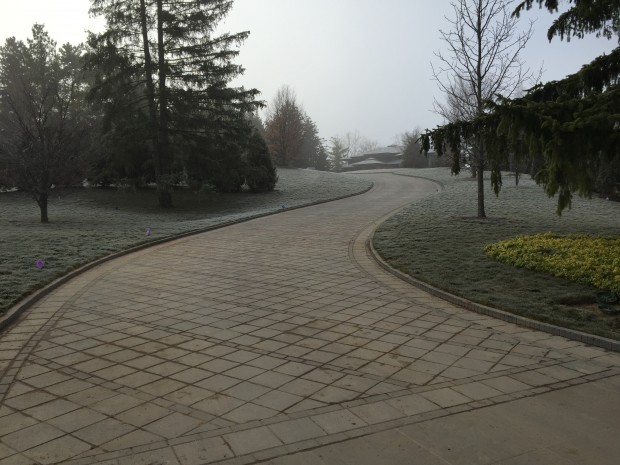 The view from inside the gate pleases me. The new drive swoops right, and then left. From the gate, the presentation of the house is all about a suggestion posited by the roof lines. The house sits down in the landscape.To the right of the drive, a single large columnar sweet gum answers the more substantial planting on the opposite side. Visually successful driveways appear as though the garden came first, and the driveway second.
The view from inside the gate pleases me. The new drive swoops right, and then left. From the gate, the presentation of the house is all about a suggestion posited by the roof lines. The house sits down in the landscape.To the right of the drive, a single large columnar sweet gum answers the more substantial planting on the opposite side. Visually successful driveways appear as though the garden came first, and the driveway second.
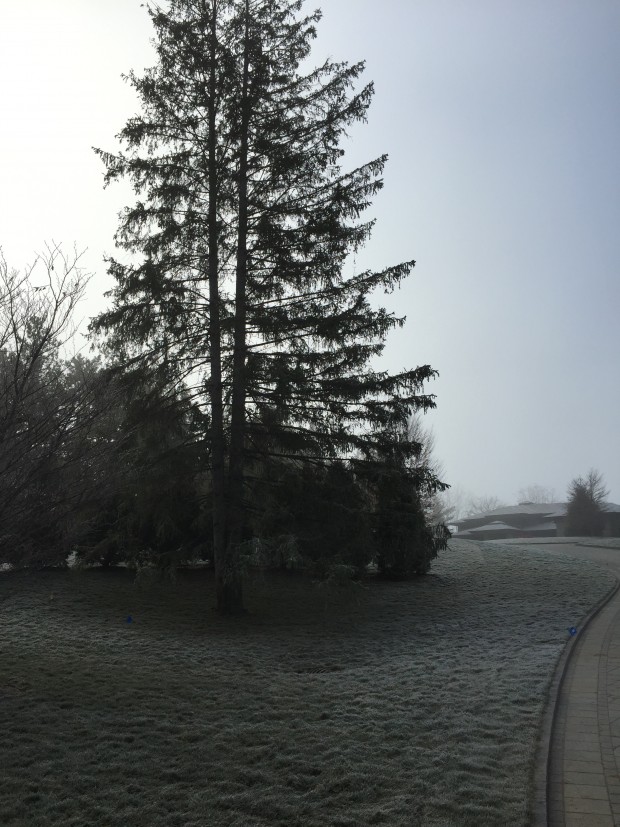 The American arborvitae were planted rather high, and the ground in front was graded down to a drain. This view to the house is circumspect. This grouping of trees provides interest in the mid ground space, and partially screens the upper portion of the property from the road.
The American arborvitae were planted rather high, and the ground in front was graded down to a drain. This view to the house is circumspect. This grouping of trees provides interest in the mid ground space, and partially screens the upper portion of the property from the road.
 Three of the big beech we planted are seen in this view. 2 on the right of the drive, and one on the left. The spruce in the center back of this picture were existing, as were the evergreens planted near the lot lines on both sides of the drive. Bringing the landscape closer to the drive in select spots creates visual interest. The rolling of the ground down to the drive is equally as interesting.
Three of the big beech we planted are seen in this view. 2 on the right of the drive, and one on the left. The spruce in the center back of this picture were existing, as were the evergreens planted near the lot lines on both sides of the drive. Bringing the landscape closer to the drive in select spots creates visual interest. The rolling of the ground down to the drive is equally as interesting.
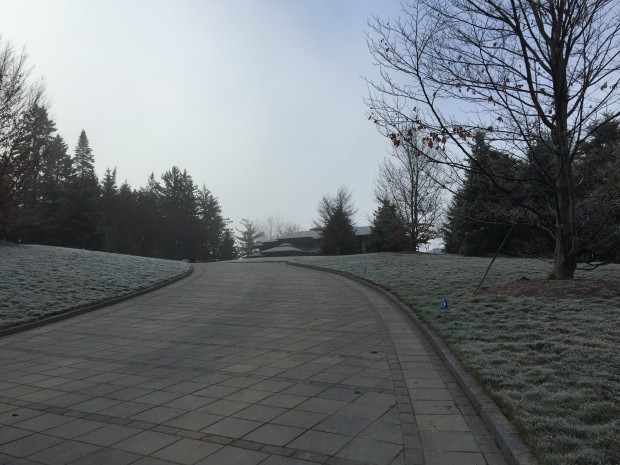 Halfway up the drive, the house is still only partially within view. The roof lines are low and wide. I greatly admire how the house was sited. This was an architect who gave as much thought to how the house would sit, as its architectural quality.
Halfway up the drive, the house is still only partially within view. The roof lines are low and wide. I greatly admire how the house was sited. This was an architect who gave as much thought to how the house would sit, as its architectural quality.
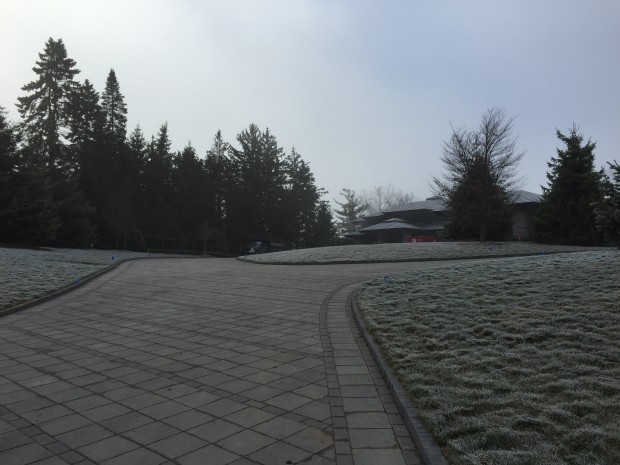 Near the house, the driveway forks. Right, for service. Left, for company. The large evergreens to the left in this picture belong to the neighbor. Here, we are borrowing views from an adjacent property. The low dome of grass in the middle of this picture, and grass sloping gently to the center on either side, sets the stage for the drive court garden. A large European green beech was planted in from of a group of three spruce.
Near the house, the driveway forks. Right, for service. Left, for company. The large evergreens to the left in this picture belong to the neighbor. Here, we are borrowing views from an adjacent property. The low dome of grass in the middle of this picture, and grass sloping gently to the center on either side, sets the stage for the drive court garden. A large European green beech was planted in from of a group of three spruce.
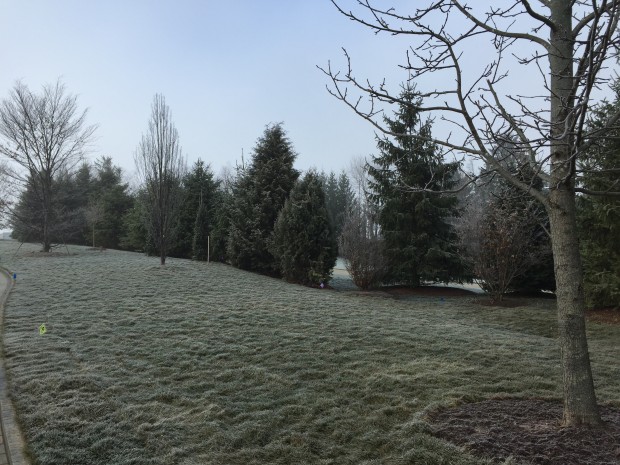 On the right side of the driveway, we added a fastigiate hornbeam, a large multi-trunked kousa dogwood, several columnar Norway spruce, and a columnar Colorado blue spruce. Barely visible behind the beech is a gingko. I rarely plant blue needled evergreens in the landscape, unless there is an opportunity for them to be viewed at a distance. Blue needles up close can be a little jarring. But there was plenty of blue, suggested by the drive, and the flexible pines.
On the right side of the driveway, we added a fastigiate hornbeam, a large multi-trunked kousa dogwood, several columnar Norway spruce, and a columnar Colorado blue spruce. Barely visible behind the beech is a gingko. I rarely plant blue needled evergreens in the landscape, unless there is an opportunity for them to be viewed at a distance. Blue needles up close can be a little jarring. But there was plenty of blue, suggested by the drive, and the flexible pines.
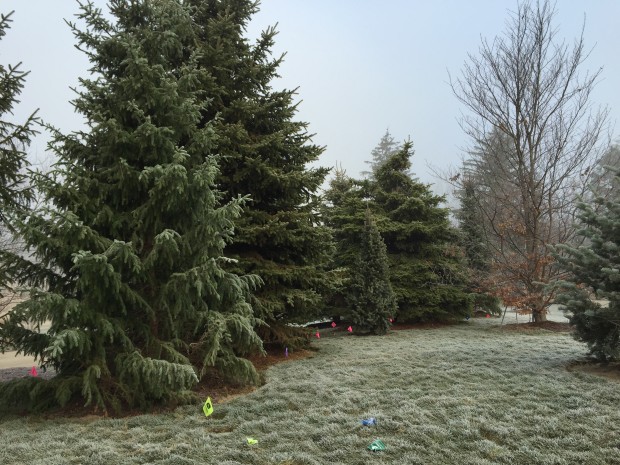 At the top of the drive, we added 3 large Serbian spruce. In the middle, a blue needled columnar Colorado spruce. At the far right in this picture, the bluest of the blue needled evergreens, a Canadian white concolor fir – abies concolor “candicans”. There is a second white fir, on the opposite side of the drive.
At the top of the drive, we added 3 large Serbian spruce. In the middle, a blue needled columnar Colorado spruce. At the far right in this picture, the bluest of the blue needled evergreens, a Canadian white concolor fir – abies concolor “candicans”. There is a second white fir, on the opposite side of the drive.
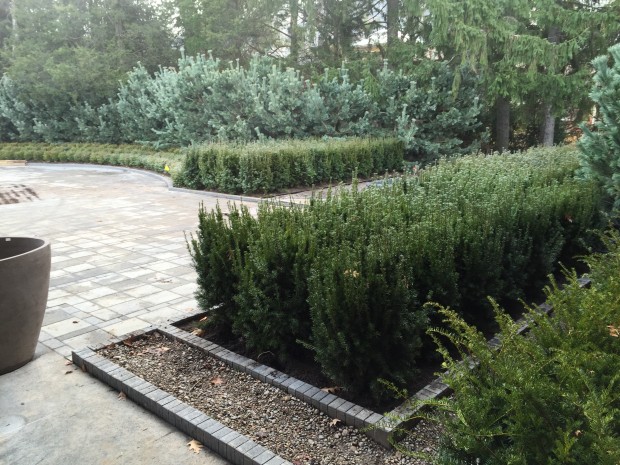 The view from the front door is all evergreen. This is Michigan. We have as many winter months as we have growing months. The idea was to install a landscape that would look good every month of the year, and be relatively low maintenance.
The view from the front door is all evergreen. This is Michigan. We have as many winter months as we have growing months. The idea was to install a landscape that would look good every month of the year, and be relatively low maintenance.
 the taxus capitata spreader vortex, in a frosty winter state
the taxus capitata spreader vortex, in a frosty winter state
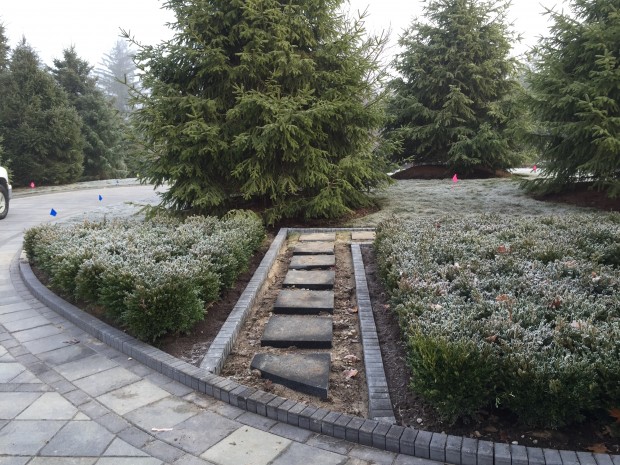 The walk from the garage to the drive court.
The walk from the garage to the drive court.
 The masses of boxwood on either side of this walk from the drive court to the garage sink the walk down. It is not visible at all, coming up the drive. As this is a service walk, I preferred that it not be prominent in the landscape.
The masses of boxwood on either side of this walk from the drive court to the garage sink the walk down. It is not visible at all, coming up the drive. As this is a service walk, I preferred that it not be prominent in the landscape.
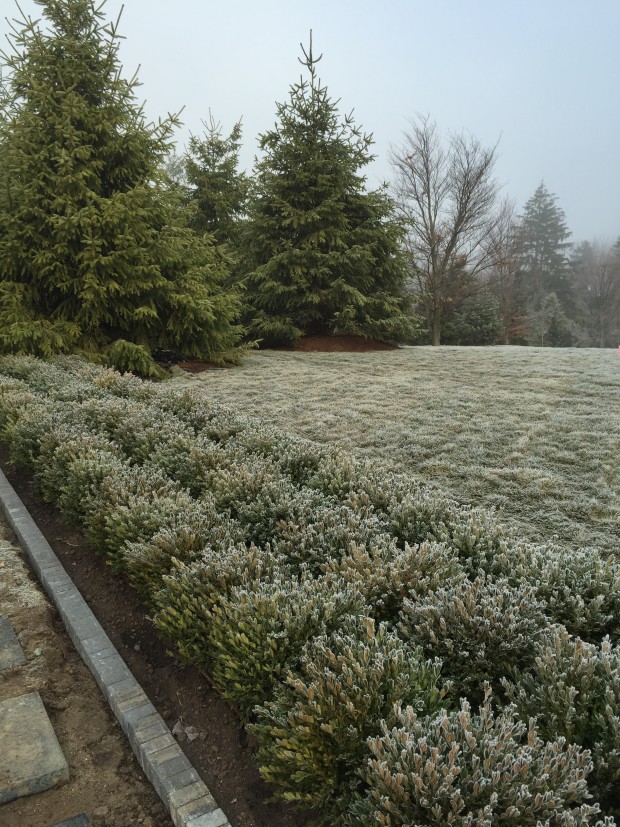 view from the service walk towards the road
view from the service walk towards the road
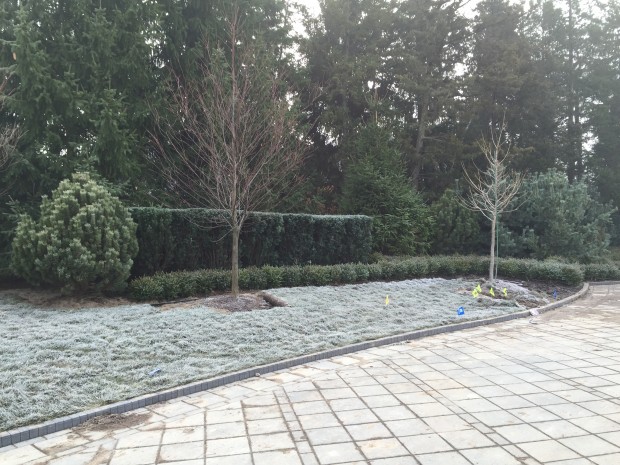 The hedge of Hicks yews were moved here from the front of the house. At the left end, a columnar mugho pine. The deciduous trees are katsura, and gingko.
The hedge of Hicks yews were moved here from the front of the house. At the left end, a columnar mugho pine. The deciduous trees are katsura, and gingko.
 looking across the service drive
looking across the service drive
 The landscape views going down the drive are so much different than what is seen on the way up. Only one columnar sweet gum is part of the view going up. Going down, it is possible to spot the other one on the right side of the drive. There was plenty to see, despite the winter.
The landscape views going down the drive are so much different than what is seen on the way up. Only one columnar sweet gum is part of the view going up. Going down, it is possible to spot the other one on the right side of the drive. There was plenty to see, despite the winter.

